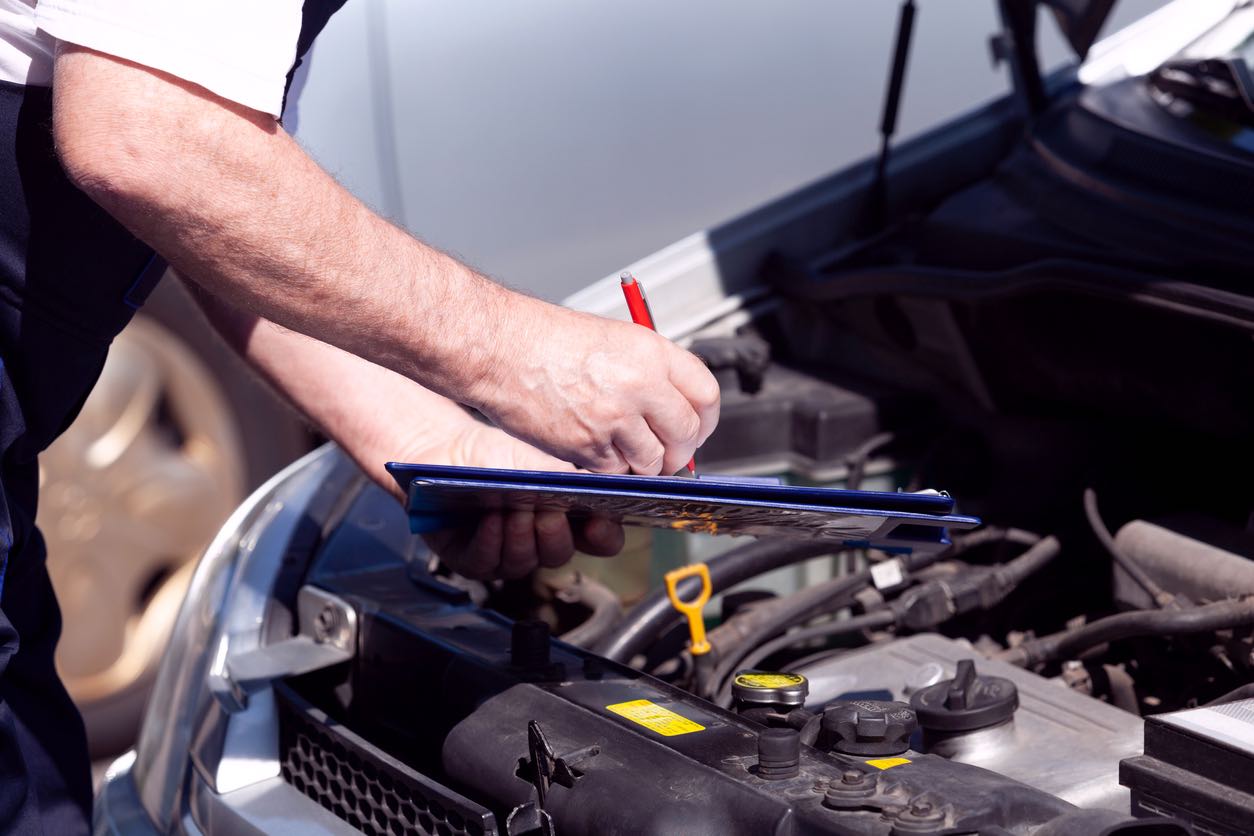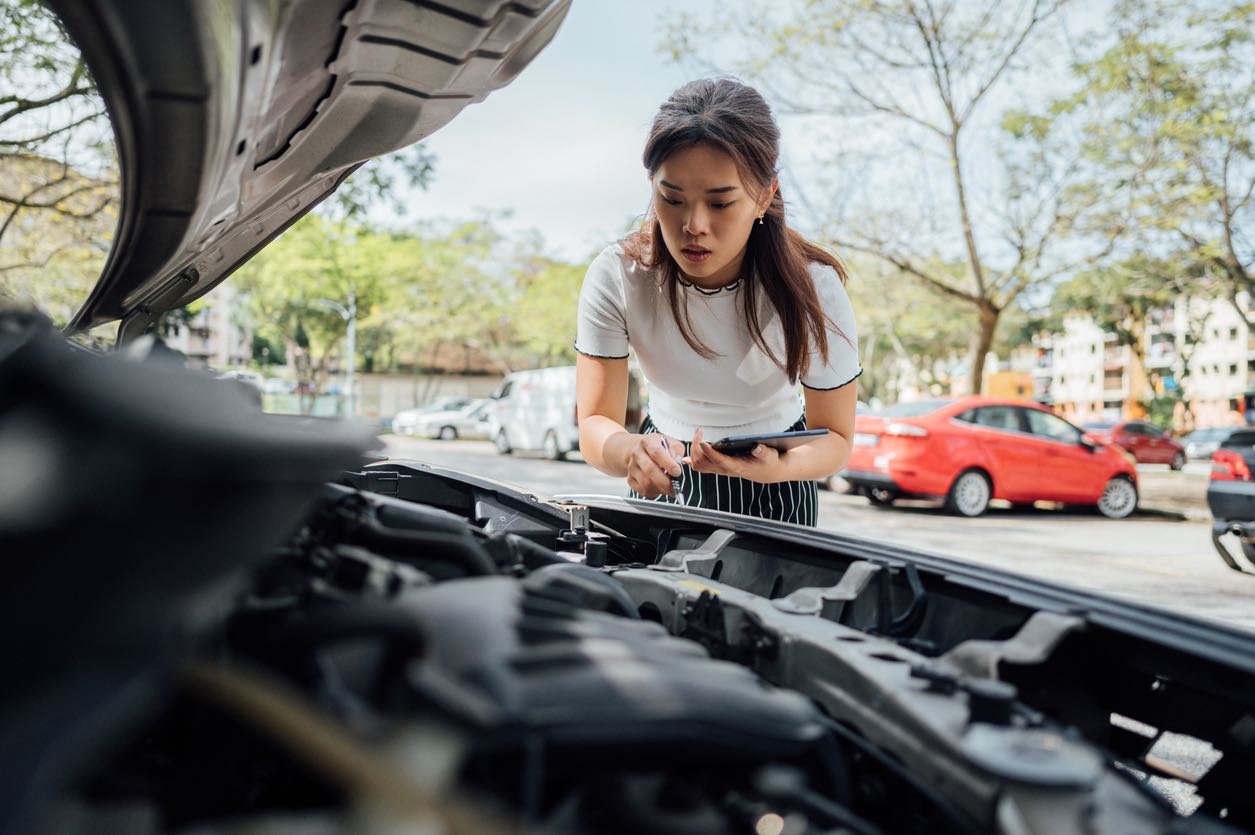The process of purchasing an used car may frequently be compared to traversing a maze that is full with dangers and unknowns. The risks are great: taking the incorrect turn might result in expensive repairs or, worse, a car that isn’t functional for your needs. This thorough guide is meant to clear any confusion and show you the way to making a wise, well-informed choice. With the right information and helpful hints, we want to turn what can be a stressful process into something easy and even pleasurable.
We go into great detail on the nuances of used car inspection in this guide, as well as answering many of the usual questions and worries that purchasers have. This guide is your compass whether this is your first time purchasing a used car or you’re an experienced buyer looking to improve your strategy. We take care of everything, from comprehensive mechanical inspections to documentation verification, to make sure you leave the used car market with a dependable and fulfilling buy. Together, let’s go out on this path to transform uncertainties into well-informed judgments and ambiguity into confidence.

Pre-Inspection Preparation
Laying the Groundwork for a Meticulous Inspection A thorough plan of preparation is necessary before starting the process of examining a used automobile. This preparation gives you confidence in your decision-making process and lays the groundwork for a comprehensive review. First things first, get a pen and notebook. Together, these two become your reliable ally when it comes to taking important notes on anything from car specs to minute details that might affect your choice. A thorough record makes sure that no information is overlooked during post-inspection analysis.
Gathering Essential Tools for an In-Depth Review Next, equip yourself with a few unusual but very useful tools. Paper towels are not simply useful for cleaning; they are also essential for monitoring engine oil levels since they give an unobstructed view of the oil’s quality and any possible problems. Finding secrets buried in crevices is made much easier with the use of a flashlight, especially in poorly lighted locations where corrosion or rust may be hiding. Even though it may look out of place, a magnet is your best bet for finding bodywork problems at their root and identifying any areas where metal may have been filled in with filler. The most crucial—and last—point is that you cannot negotiate access to the car’s history record. This history report is a veritable gold mine of information that can assist you identify any warning signs or deal-breakers at an early stage.
Essentials Breakdown:
- Pen and Notebook: Essential for noting down key information and observations, helping you remember specific details and make comparisons.
- Paper Towels: Handy for checking the engine oil level and quality, which can indicate maintenance levels and potential engine issues.
- Flashlight: Crucial for inspecting less visible areas, especially useful for identifying rust, corrosion, or other hidden damages.
- Magnet: A clever tool for detecting body filler, indicating past accidents or repairs.
- Vehicle’s History Report: Provides a comprehensive background check, revealing the car’s history of accidents, ownership, and maintenance.

Ensuring Paperwork Accuracy: A Crucial Step in Buying a Used Car
You cannot afford to skip the step of checking the accuracy of the vehicle’s documentation when buying an used car. This process gives you information on the vehicle’s history and condition in addition to ensuring that it is legitimate. Start by carefully examining the title and registration of the car. This is necessary to verify that the person selling it is the car’s legitimate owner. Verify that everything matches by comparing the seller’s ID with the name on the title.
Next, carefully check the title for any liens or other legal obstacles that can prevent ownership from being transferred. A lien suggests that a third party could be entitled to the car legally, usually as a result of the present owner’s unpaid bills. It is essential to settle these matters prior to buying in order to prevent legal troubles later.
Lastly, look at the maintenance history of the car. A well-maintained car will have a well-documented maintenance schedule. Regular inspections, repairs, and any major maintenance the vehicle has had should all be included in this paperwork. It is a trustworthy gauge of the car’s condition and can foretell any problems down the road.
- Vehicle Registration and Title: Confirming the seller’s ownership and the absence of discrepancies is foundational to a secure purchase.
- Liens on the Vehicle: Investigating liens is vital to ensure there are no hidden claims or financial obligations attached to the vehicle.
- Maintenance Records: A comprehensive review of maintenance logs reveals the car’s upkeep history and forecasts its reliability.

Delving into the Details of Exterior Assessment:
The outside of a used automobile provides the first indications regarding its history and condition. Begin by carefully inspecting the windshield. Check for any chips or cracks, since these can deteriorate with time and become more noticeable when traveling at a fast pace. This is more than just a superficial problem; it’s about protecting your safety and averting more expensive repairs.
Next, pay attention to the car’s locks. From the driver’s and passenger’s seats, test the lock and unlock mechanisms. Make sure they function properly because broken locks may indicate electrical problems or previous efforts at breaking and entering.
Lights, Bodywork, and Doors – Key Indicators of Care and Quality:
For both legal compliance and safety, the lights are necessary. Verify all of the signal lights, taillights, and headlights. Make sure they are operating properly and check for any accumulation of moisture within the case, as this might be a sign of a failed seal.
Examining the bodywork is essential. Seek out any signs of corrosion, dings, scrapes, or uneven painting, as these may indicate previous mishaps or inadequate upkeep. A thorough check should include:
- Windshield: Assess for any chips or cracks.
- Locks: Verify their smooth operation from both sides.
- Lights: Ensure all lights function properly and are free from moisture.
- Bodywork: Inspect for rust, dents, scratches, or paint issues.
- Doors: Check their alignment and closing mechanism.
Lastly, examine the doors closely. Make sure they open and close easily and precisely line up with the body of the vehicle. Misalignment may indicate frame damage or previous collisions. Remember that these particulars determine both your safety and the longevity of the automobile. Being meticulous not only saves you money on repairs but also improves your negotiation position.

Evaluating Tire Condition
Tires are one of the most important components that need to be examined while inspecting a used vehicle. They provide a wealth of information on the car’s past upkeep as well as its present state. The process for inspecting tires need to be thorough and rigorous.
Examine the tire brand first. Opt for tires from reputable manufacturers like Michelin or Goodyear, as they indicate an investment in quality by the previous owner. If you’re not familiar with the brand, a fast web search can tell you about its performance and dependability.
Checking for consistency is just as crucial. An even wear and tear is ensured by matching tires from the same brand and model, making for a balanced and secure driving experience. Conversely, mismatched tires may indicate careless replacement or maintenance procedures.
Tire damage indicators are warning indications. Examine the tire’s surface for any cuts, scratches, or bubbles. Over time, these kinds of problems may degrade and provide safety hazards. Keep in mind that harm that appears superficial may only be the beginning of something bigger and more dangerous.
The depth of the tread on tires directly relates to their health. States have different minimum legal tread depth requirements, but in general, tires need to have enough depth to be grippy on wet roads. Not only do shallow treads pose a safety risk, but they also cost money since they will need to be replaced more frequently.
Though an essential part, the spare tire’s condition is frequently disregarded. A spare tire that is kept in good condition shows that its owner takes care of their vehicles.
Finally, confirm that the tire pressures are as high as the manufacturer recommends. Tires that are properly inflated help ensure safe handling and fuel economy. Reduced traction, uneven wear, and even tire failure can result from improper tire pressure.
In conclusion, a thorough tire check may provide a wealth of information regarding the past and present state of a used vehicle. In addition to ensuring your safety while driving, this attention to detail may provide you leverage in negotiations and possibly save you money and future hassles.

Engine Analysis
Uncovering the Heart of Your Potential Purchase: The engine of an used automobile deserves your full attention while examining it. It is the engine of the car, and the way it is maintained may make or break your investment. Start by looking at the oil level; this is a simple but important way to assess the condition of the engine. Low oil levels might be an indication of internal problems or, worse, of negligence. Additionally, be alert for any indications of oil leakage. Oil stains or residue around the engine area might be used to identify them. Red flags like leaks indicate the possibility of future expensive repairs.
Sensing Beyond Sight: Don’t only depend on signals that are visible. One of the most useful tools for spotting engine issues is your sense of smell. When the engine starts, a burning or musty smell is frequently an indication of hidden problems that may not be apparent right away. Examine the oil filter as well. If left ignored, a thick coating of tar-clogged filter can cause serious engine damage and is an indication of inadequate maintenance. The purpose of this examination phase is to prevent engine problems in the future.
- Oil Level Check: The oil level should be within the recommended range. Low oil can indicate potential engine wear or leaks.
- Leak Detection: Be vigilant for any signs of oil leaks, which are often indicated by stains or residue on the engine.
- Oil Filter Condition: A clean oil filter suggests regular maintenance, while a clogged filter can signal neglected care.
- Odor Inspection: Pay attention to any unusual odors when starting the engine, as they can indicate internal problems.

Understanding Battery Health: It is crucial to check the condition of an automobile’s battery and should not be disregarded. A healthy battery guarantees a car’s consistent starting and supplies the power required for its electrical systems. Start by looking for any physical damage on the battery, including cracks or bulges, as these might be indicators of interior problems.
- Physical Damage: Visible cracks or bulges in the battery casing can signal serious internal damage, potentially leading to malfunction or failure.
Identifying Corrosion and Inflation: One typical problem with automotive batteries is corrosion on the terminals and wires. This may interfere with the electrical connection, leading to poor performance or difficulties starting. Inspect the area surrounding the terminals for any white, green, or blue powdery material. Furthermore, an enlarged or bloated battery frequently indicates internal damage or overcharging, which is a major issue that has to be addressed right away.
- Corrosion on Terminals: Powdery deposits on battery terminals can impede electrical flow, compromising the battery’s performance.
- Battery Inflation: A swollen battery casing suggests overcharging or internal damage, necessitating a replacement to prevent potential hazards.
You can be sure the used vehicle you’re contemplating has a dependable power source—which is necessary for a comfortable drive—by performing a complete battery examination.

Ensuring Optimal Transmission Performance: A Crucial Step in Used Car Inspection
To ensure smooth and dependable functioning, it’s critical to examine the intricacies of a used car’s transmission’s operation. The lifetime of the vehicle and the entire driving experience are greatly impacted by this thorough evaluation.
Manual Transmission Assessment
- Fluid Quality Check: Examine the transmission fluid’s color, odor, and level. Clear, slightly pinkish fluid indicates good health, while a burnt smell or dark color suggests potential issues.
- Gear Shifting Smoothness: During a test drive, pay attention to the ease of shifting gears. Difficulty in shifting or unusual noises can signal transmission problems.
Automatic Transmission Evaluation
- Transmission Fluid Inspection: Similar to manual transmissions, check the fluid for any signs of contamination or degradation.
- Automatic Gear Transition: Ensure that the car transitions smoothly between gears without delays or jerks, as these can be red flags for transmission troubles.

Securing Your Safety with a Thorough Brake Check:
- Pedal Inspection: Start by looking for any indications of wear or failure on the brake pedals. Unusual vibrations or a burning smell might be signs of deeper problems with the braking system. These signs may indicate worn-out brake pads or overheated brakes, both of which impair your road safety.
- Brake Fluid Level and Quality: Examine the reservoir holding the brake fluid. The fluid has to look clean and be at the proper level. Brake effectiveness can be hampered by low or dirty brake fluid, which can also indicate a system leak.
Steering System Analysis
A Comprehensive Approach to Steering Performance Test:
You must pay close attention to the steering system when you test drive an used automobile. Making sure you stay safe on the road in the future is more important than just spinning the wheel. Turn the steering wheel and start by feeling for any resistance or unevenness. This can indicate underlying problems. Observe closely how the vehicle handles your steering inputs. Does it precisely follow the path you intended, or does it stray? These observations are essential for assessing the general condition and handling qualities of the vehicle.
Additionally, while steering, pay attention to any odd noises. Noises such as creaks or moans may be signs of worn-out parts, which might endanger the car’s operation and safety.
Points for Further Analysis:
- Resistance in Steering: Notice any stiffness or resistance when turning the wheel. This could point to problems in the steering rack or a need for power steering fluid.
- Unusual Steering Noises: Listen for any creaking or groaning sounds. These noises often signal that crucial steering components need attention.
- Response to Steering Inputs: Observe how the car responds to steering inputs. Delayed or sluggish responses might suggest issues with steering linkage or alignment.
- Vibrations in Steering Wheel: Feel for vibrations in the steering wheel, especially at higher speeds. This could be a sign of unbalanced tires or issues with the steering column.
- Steering Pull: Check if the car pulls to one side. This is often a sign of misaligned wheels or uneven tire wear, which can affect the vehicle’s handling and safety.
You may acquire significant insights into the state of the used car by carefully evaluating each component of the steering system. This will ensure that you make a buying decision that is both safe and well-informed that is in your best interest.
 Enhanced Interior Inspection: A Deep Dive into Comfort and Functionality
Enhanced Interior Inspection: A Deep Dive into Comfort and FunctionalityThe inside assessment of an used automobile is just as important as the mechanical evaluation when it comes to evaluating the vehicle. The purpose of this exhaustive inspection is to guarantee not only the comfort of the interior amenities of the vehicle but also their operation and safety.
Overall Condition: Start by looking for any tears, stains, or wear indicators on the carpets, roof lining, and upholstery. The upkeep of a car’s interior frequently mirrors that of its mechanical components. Next, carefully inspect the console and dashboard sections for any fading or cracks, since these might be signs of improper maintenance or exposure to too much sunshine.
Door Functionality: Make sure all doors close and open securely by giving them a test. Examine the door knobs from the interior as well as the outside, looking for damage and easy-to-use features. A car’s structural soundness and previous repair history may be determined in large part by its door alignment and operation.
Dashboard Lights and Gauges: Every dashboard indication ought to be functional. Turn on the automobile, and keep an eye out for any warning lights that remain on. A safe driving experience and health monitoring of the car depend on functional dashboard lighting and gauges.
Heating and Air Conditioning Systems: Check their efficiency by turning on the heater and air conditioner. Unusual sounds or inconsistent temperature management might be signs of expensive future repairs. Recall that having a cozy interior when driving is essential to a pleasurable experience.
Seatbelt Functionality: Every seatbelt need to latch firmly and retract smoothly. One element of car safety that cannot be compromised is seatbelt integrity, which poses a major risk to public safety.
Window Operations: Make that all windows are operated to their maximum potential, noiselessly, and without resistance. In addition to being essential for ventilation and emergency circumstances, functional windows also improve comfort.
Sunroof Mechanics: If the vehicle has a sunroof or moonroof, make sure it operates smoothly and that there are no damage or leaks visible. A functional sunroof enhances the car’s visual appeal and usefulness.
Infotainment System: Check the infotainment amenities such as the GPS system, radio, Bluetooth connectivity, and others. These technological features frequently improve the driving experience in the modern day, therefore it’s crucial to take their operation into account.
This comprehensive, in-depth interior examination enhances your overall driving safety and enjoyment in addition to helping you make an informed buying decision. Note that the state of the inside frequently reflects the general level of maintenance the automobile has undergone.

Knowing what deal breakers to look out for when buying a secondhand automobile is essential. These warning signs may point to underlying issues that need expensive repairs or make driving hazardous.
- Lack of Repair Records: Generally speaking, a well-kept car has records. The lack of such data may indicate unresolved issues or improper upkeep.
- Visible Signs of Neglect: Stains, dents, and other physical signs of maltreatment can point to a larger disrespect for the technical condition of the vehicle.
- Mechanical Quick Fixes: Steer clear of flimsy fixes. For example, a recently cleaned engine bay might be an attempt to hide leaks or other problems.
- High-Performance Model Concerns: These cars are subjected to additional wear and strain, which can result in costly repairs. A careful examination and extra caution are advised if you’re thinking about buying a high-performance vehicle.
- Persistent Smoke Odors: A persistent tobacco odor can be uncomfortable and challenging to get rid of, which might lower the car’s market value.
You should give considerable thought to each of these things above. Their existence could be an indication that the vehicle hasn’t been well-maintained or that urgent repairs are required, which could eventually result in more serious problems. As such, they function as powerful signals to either walk away from the sale totally or negotiate a far cheaper price.

We’ve been through the essential stages of examining a used automobile in this in-depth guide, emphasizing the importance of each step to guarantee a prudent purchase. A comprehensive examination guarantees your happiness and safety in addition to safeguarding your investment. We’ve emphasized the value of thoroughness and attention to detail in everything from the preliminary planning, which includes assembling the required equipment and paperwork, to the painstaking inspection of every auto part. The inspection procedure, which includes both exterior and internal evaluations, aims to comprehend the car’s history and present state in addition to spotting possible problems.
The most important thing to remember from this publication is how it empowers you as the customer. Equipped with information, you may appraise a used vehicle with assurance, engage in more effective negotiation, and arrive at a well-informed choice. Consider that the time and effort you invest in thoroughly examining a used automobile pays off in the long term by averting expensive repairs and guaranteeing a safe and pleasurable driving experience. Take this advice with you as you venture into the world of used vehicles to ensure a happy and successful purchase.

Ship A Car, Inc.: A Decade of Unmatched Expertise and Reliability A shining example of competence in the auto transportation sector is Ship A Car, Inc. After more than a decade of committed service, they have become a reputable brand that is associated with dependability and expertise. Their remarkable collection of thousands of 5-star evaluations, which consistently demonstrate their ability to satisfy customers, is proof of this. Their persistent drive to operational excellence and customer service is further evidenced by their Better Business Bureau A+ rating, which further endorses their commitment to excellent service.
Seamless, Nationwide Shipping Tailored for Your Needs A smooth, hassle-free vehicle shipping service is provided by Ship A Car since they are aware of the difficulties and worries associated with transporting a used car. They offer all-inclusive shipping options throughout the US, enabling the timely and secure arrival of your car. To provide you with peace of mind, the entire process is open, customer-focused, and transparent. Their team of professionals is ready to help, providing individualized care and answering any questions or concerns. Call Ship A Car, Inc. at (866) 821-4555 for a free price quote and a stress-free shipping experience. You can rely on them to ship your used car with the same level of care and expertise as you would if you were driving on an open road.
1. How Do I Determine the Reliability of a Used Car?
Reliability Indicators: In order to determine the dependability of a used car, it is necessary to conduct a thorough inspection. Conduct an investigation into its maintenance history and carefully examine the report on its vehicle history. These procedures identify previous problems and consistent care, both of which are essential for determining lifespan.
2. What Mileage Should I Consider When Buying a Used Car?
Mileage Considerations: Aim for automobiles that have reached fewer than 12,000 to 14,000 miles yearly, and steer clear of vehicles that have surpassed 200,000 miles. Excessive mileage is frequently associated with wear and tear, which has an effect on the asset’s lifetime.
3. Why is Engine Inspection Crucial in a Used Car Purchase?
Engine Inspection Necessity: It is imperative that you always perform a thorough inspection of the engine, as repairs may be quite costly. Leaks, strange sounds, and general performance are all things that should be checked carefully in order to avoid future expensive repair expenditures.




